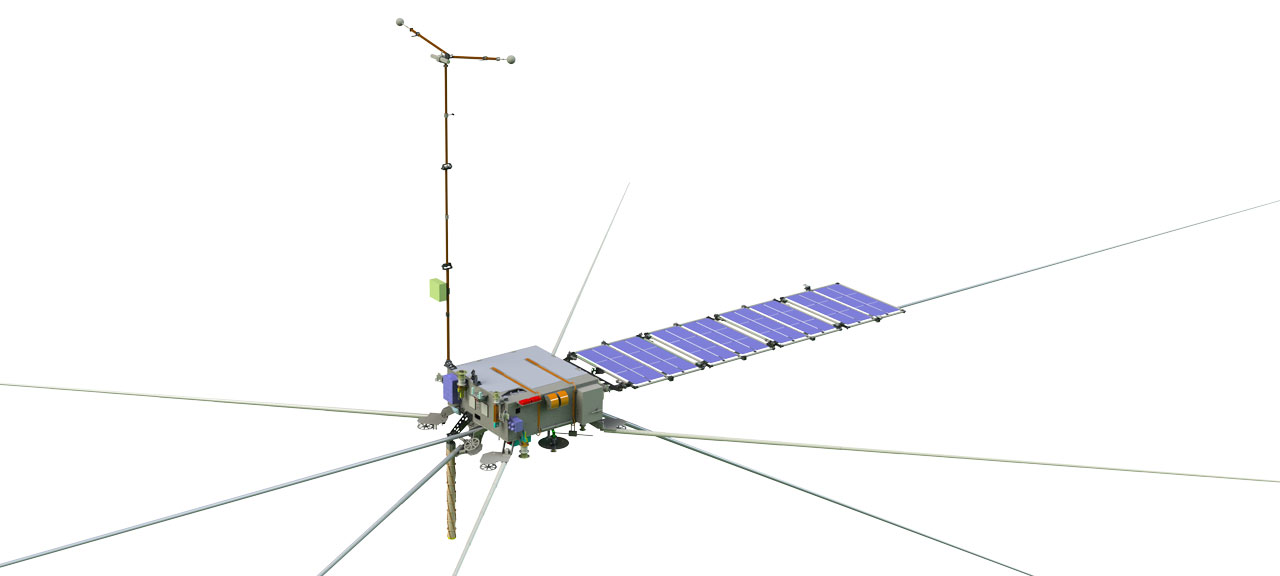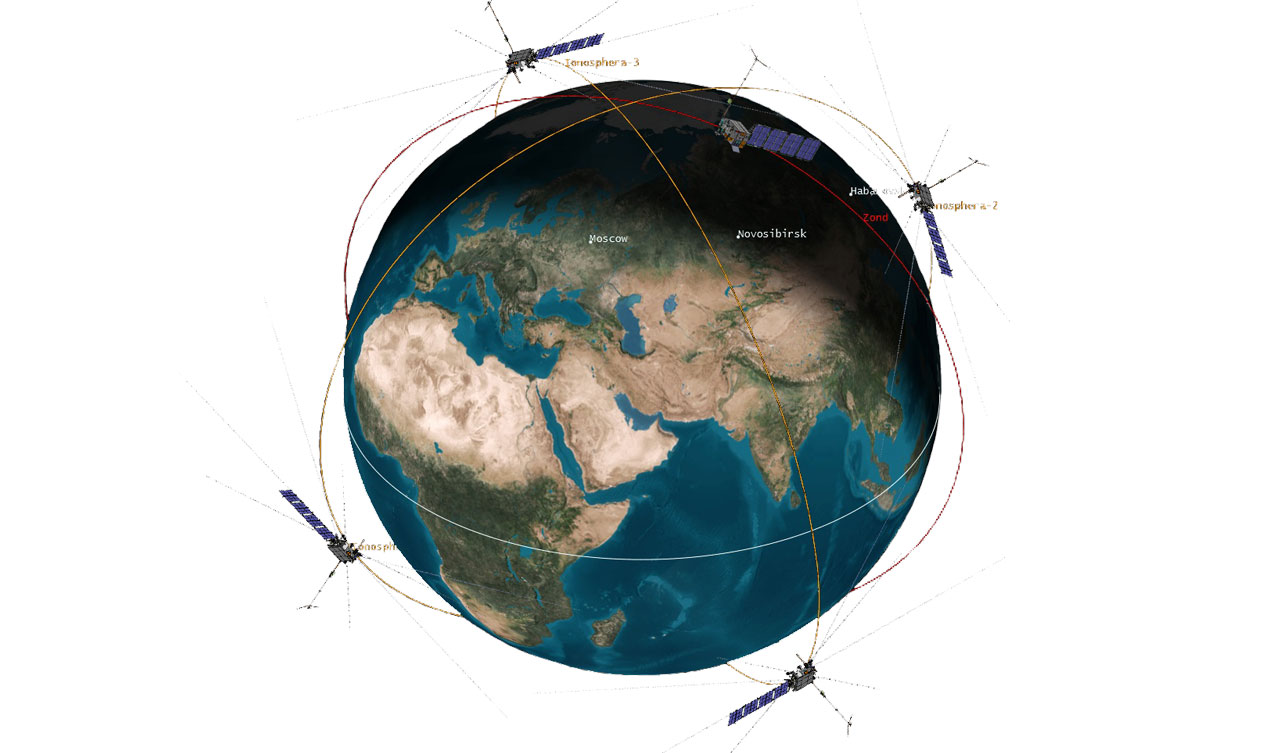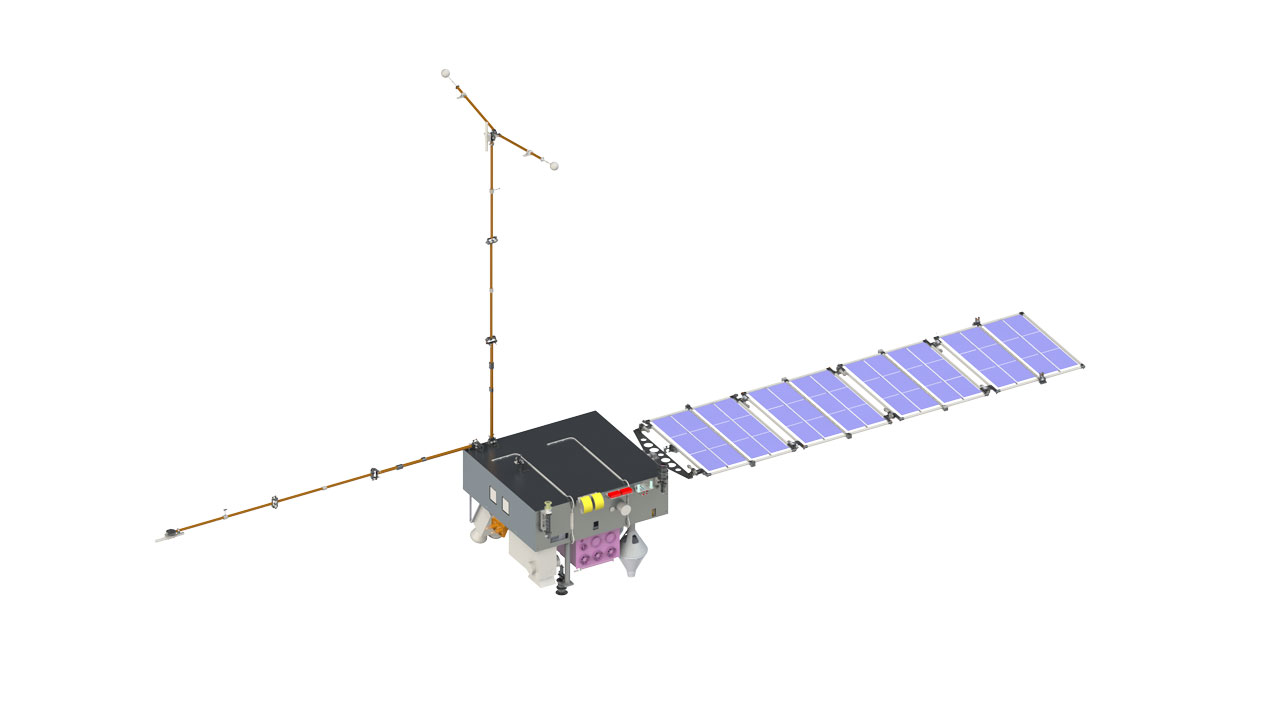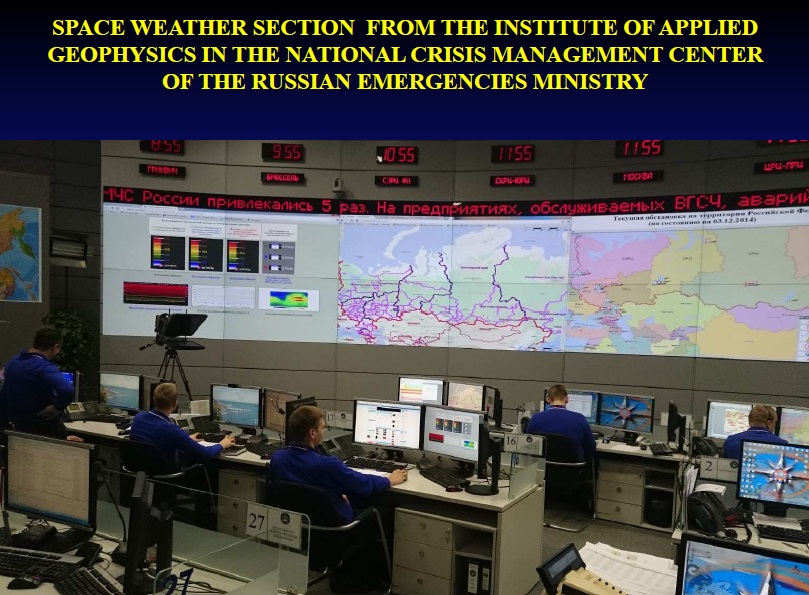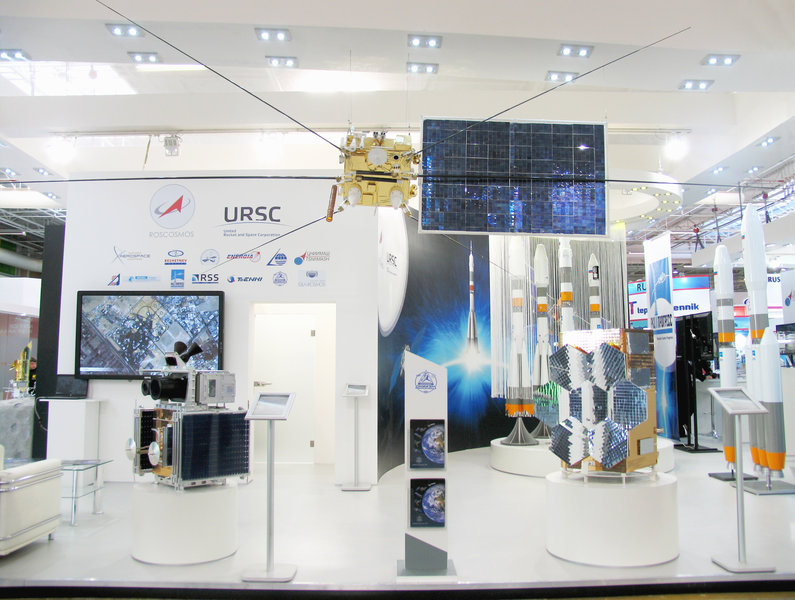The composition of the space segment "Ionozond"
Appointment space complex "Ionozond"
1. Spacecraft "Ionosphere" (4 SC) | 820 km
2. Spacecraft "Zond" (1 SC) | ~ 650 km
1) Monitoring the state of the ionosphere in terms of:
- Observation of the space-time structure and parameters of the ionosphere;
- Observations of the spatial distribution of the electron density of the ionosphere;
- Observation of natural and artificial irregularities and ionospheric-magnetic disturbances;
- Observation of the physical phenomena in the ionosphere resulting from the active influence of natural and anthropogenic origin;
- Observations of the spatial distribution of the electromagnetic fields in the near-Earth space;
- Monitoring the distribution of ozone in the upper atmosphere.
2) Observation of the Sun in terms of:
- Mapping of the Sun and the solar spaces in the ultraviolet and visible regions of the spectrum;
- Measurement of fluxes of solar cosmic rays and harsh electromagnetic radiation;
- Measurement of the solar X-ray and UV radiation.
3) Monitoring of the upper atmosphere in part:
- Observing the glow of the upper atmosphere (optical characteristics);
- Monitoring the composition of the neutral upper atmosphere.
4) Control of the magnetosphere in part:
- Monitoring the radiation situation;
- Registration of magnetospheric phenomena.
5) Observation of wave activity of electromagnetic waves in the ionosphere and upper atmosphere.
6) Monitoring corpuscular ionizing radiation in part:
- Measurement of the spectral characteristics of proton and electron fluxes of solar cosmic radiation;
- Measurement of the flux of galactic cosmic radiation.
